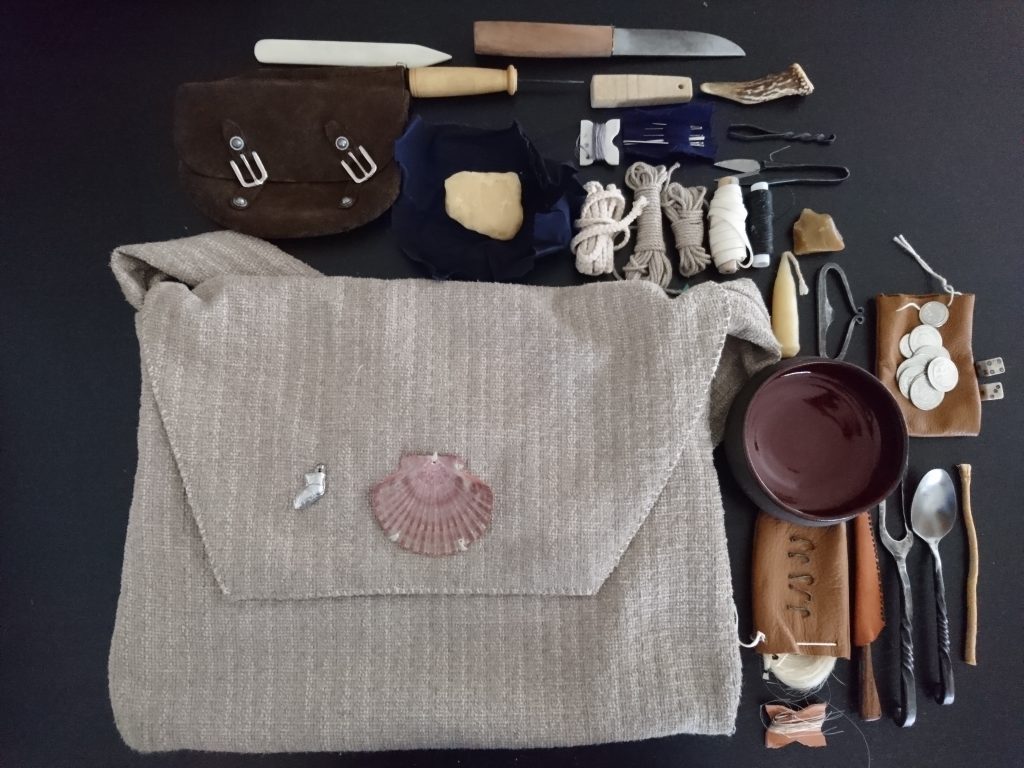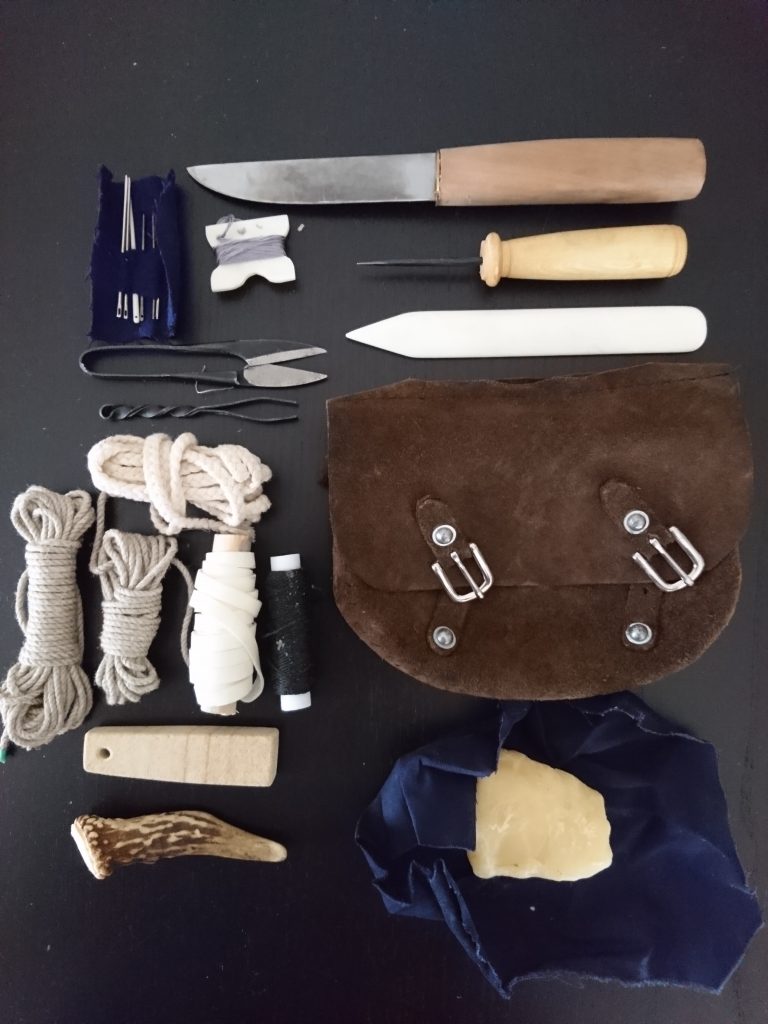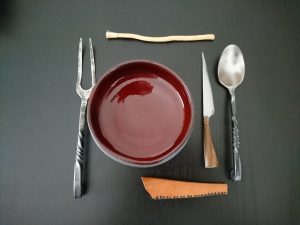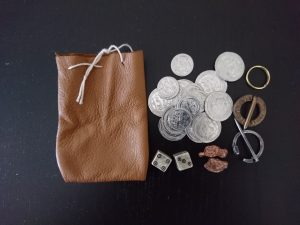On any given day, you may have a sole or seam tear out – or find yourself beside a stream with a bit of time to kill. One aspect of these trips which has stuck with me is the need to develop a set of everyday items that are useful and always with you. Like any modern outdoor activity, having a repair kit suited to your needs is very important. If you only ever use duct tape, then bringing twine isn’t very important. Likewise, if you have the perfect repair kit, but it’s sitting at home on the shelf, it does you no good. The same applies to any medieval person.

Additionally, I normally carry a few other things in my scrip, depending on what I’m doing or the context of the day. During colder times of the year, it might be an extra hat and gloves. In the summer it is likely a leather costrel.
Belt pouches and shoulder bags
A starting point for this project is to determine what container you’re willing to carry around with you all the time. For some, especially the Norse or later continental Europeans, that might be a decorated belt pouch. For the 12th Century, I use a scrip. A scrip is the iconic shoulder bag carried by a pilgrim. For resources on other bags or options, here are two good resources:
Repair kit
 My repair kit is assembled from items that a reasonable person could have (with a few luxuries), but I do not have an example of a similar extant kit. I’ve used everything I keep in the kit at one time or another and have found beeswax and the awl to be the most frequently used. I’m enamored with my awl (available from MedievalCraftEu via Etsy). All of this is stored in the belt pouch, except the knife.
My repair kit is assembled from items that a reasonable person could have (with a few luxuries), but I do not have an example of a similar extant kit. I’ve used everything I keep in the kit at one time or another and have found beeswax and the awl to be the most frequently used. I’m enamored with my awl (available from MedievalCraftEu via Etsy). All of this is stored in the belt pouch, except the knife.
- Belt pouch (though this lives in the scrip, not on a belt)
- Various needles, in a scrap of wool
- Silk thread, on a winder
- Awl
- Bone folder
- Scissors
- Tweezers
- Hemp twine (2 sizes)
- Braided cotton cord
- Waxed thread
- Whetstone
- Fid
- Beeswax cake (in linen wrapper)
Fire-starting
 The fundamental components here are 1) flint, 2) a striker, and 3) something to light.
The fundamental components here are 1) flint, 2) a striker, and 3) something to light.
- Sack
- Steel striker (from Feed the Ravens)
- Flint (a piece picked up in France)
- Char cloth
- Tin – This really should be replaced
- Beeswax candle
- Linen / cotton shredded scraps
- Tow (a plant cord)
Dining
 Cinara provided the gorgeous bowl, which serves well as a bowl or a cup.
Cinara provided the gorgeous bowl, which serves well as a bowl or a cup.
- Bowl
- Fork
- Sharp knife
- Spoon
- Toothbrush (miswak)
Fishing
 Really, I’m just a sucker for a clear stream and the chance to drop a line. I cut a thin stick for a pole each time I take this out and make line as I need it. The hooks were a mini-project, made while tinkering with a small forge. I have enough space in my repair kit pouch that this kit resides there as well.
Really, I’m just a sucker for a clear stream and the chance to drop a line. I cut a thin stick for a pole each time I take this out and make line as I need it. The hooks were a mini-project, made while tinkering with a small forge. I have enough space in my repair kit pouch that this kit resides there as well.
- Bag
- Horsehair to make additional line
- Spare hooks
- Premade line on a winder
Coin purse
 I feel pretty secure from bandits and generally have my coin purse on me, along with a few dice because the flesh is weak and easily tempted.
I feel pretty secure from bandits and generally have my coin purse on me, along with a few dice because the flesh is weak and easily tempted.
